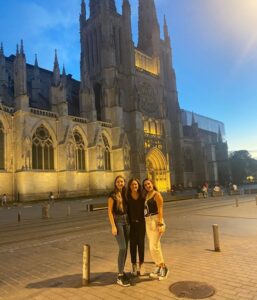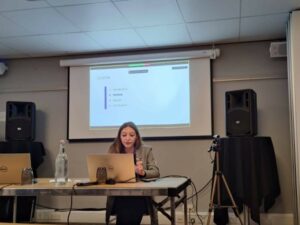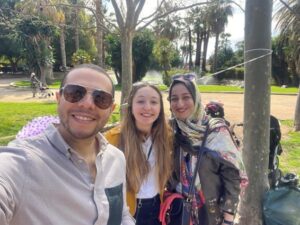The second year as a Ph.D. student in CLARIFY has come to an end and was full of collaborations among the different ESRs of the network.
The second year as a Ph.D. student in CLARIFY has come to an end and was full of collaborations among the different ESRs of the network.
This second year of my Ph.D. actually ended with the participation in two international conferences, the International Conference in Image Processing (ICIP) and the International Conference on Intelligent Data Engineering and Automated Learning (IDEAL). During the former that took place at the end of October in Bordeaux, France, I could present my work in collaboration with Andrés (ESR12) entitled “A Self-Training Weakly-Supervised Framework for Pathologist-like Histopathological Image Analysis.” During the latter at the end of November in Manchester, UK, I presented a federated self-training approach in collaboration with Dr. Zhao from the University of Amsterdam (UvA), “Federating Unlabeled Samples: A Semi-Supervised Collaborative framework for Whole Slide Image Analysis.”
With friend and colleague Rocío del Amor from UPV and supervisor Valery Naranjo visiting Bordeaux, France for the ICIP 2022)
IDEAL 2022 conference presentation in Manchester, UK
In addition to the works presented at international conferences, the secondment at UvA from December 2021 to February 2022 was the beginning of a long-term collaboration with Yuandou (ESR2) and her supervisor Dr. Zhao, a collaboration that is still on-going. The work started during that secondment has evolved a lot since then; and Yuandou and I have finally completed the first version of a work aiming to bridge the gap between AI researchers and federated learning. The resulting baseline, entitled “Notebook Federator”, leverages the Jupyter Notebook environment to reduce the complexity of federated implementations for both AI researchers and hospitals. This work was presented in the paper “Federating Medical Deep Learning Models from Private Jupyter Notebooks to Distributed Institutions“, which got published in a special issue in Applied Sciences, “Pattern Recognition in Biomedical Informatics”.
Additionally, after several months of working on a review of the applications of DL models for the analysis WSIs of skin melanocytic tumors, Zahra (ESR9), Andrés (ESR12) and I have finally been able to publish a complete systematic review manuscript entitled “Deep Learning for Skin Melanocytic Tumors in Whole-Slide Images: A Systematic Review” to a special issue to a special issue about “Image Analysis and Computational Pathology in Cancer Diagnosis” in the Cancers journal. With that work, we hope to provide an original point of view from both a pathologist and engineer perspectives, emphasizing both the clinical aim and DL methods used in each of the studies.
In parallel, Andrés (ESR12) and I have also started to define the next steps of the project for the year ahead, which promises to be intense. In particular, this year, we wish to focus our efforts on the analysis of spitzoid tumors of uncertain malignant potential (STUMPs) and, hopefully, obtain novel results that could help understand these better from the clinical perspective.
The team of the systematic review collaboration: ESR12, ESR7 and ESR9
Laëtitia – ESR7.




